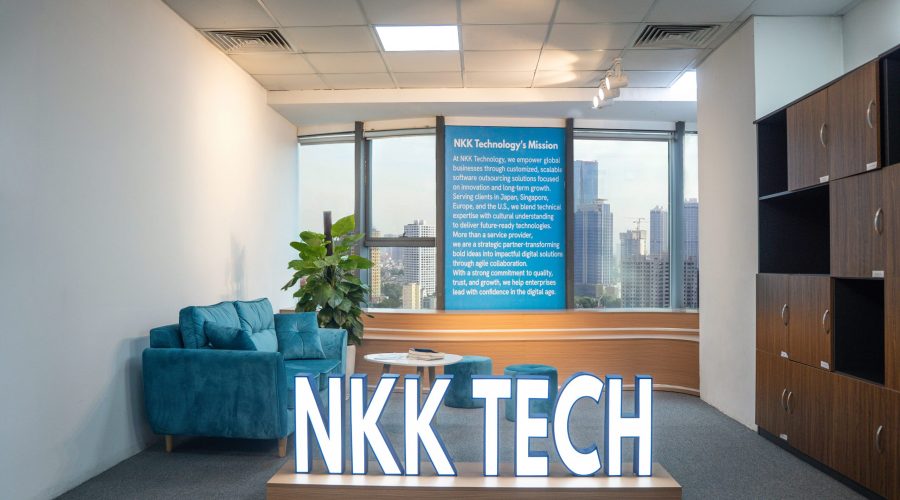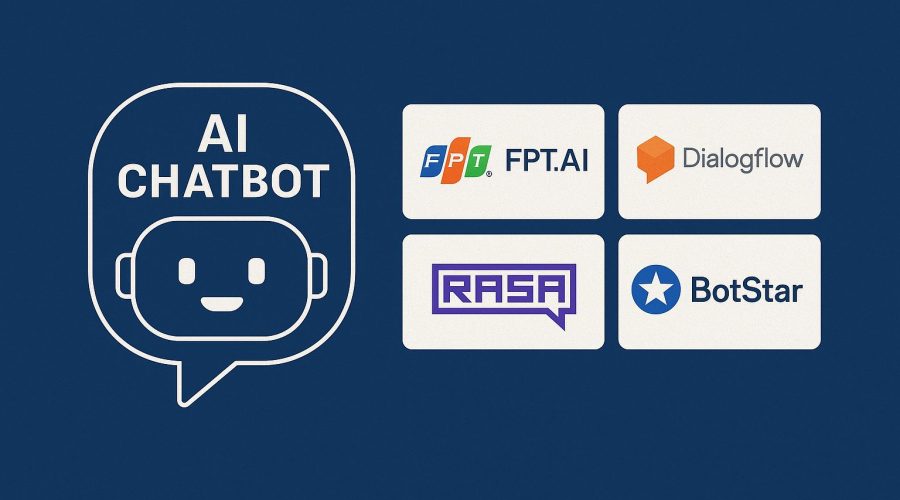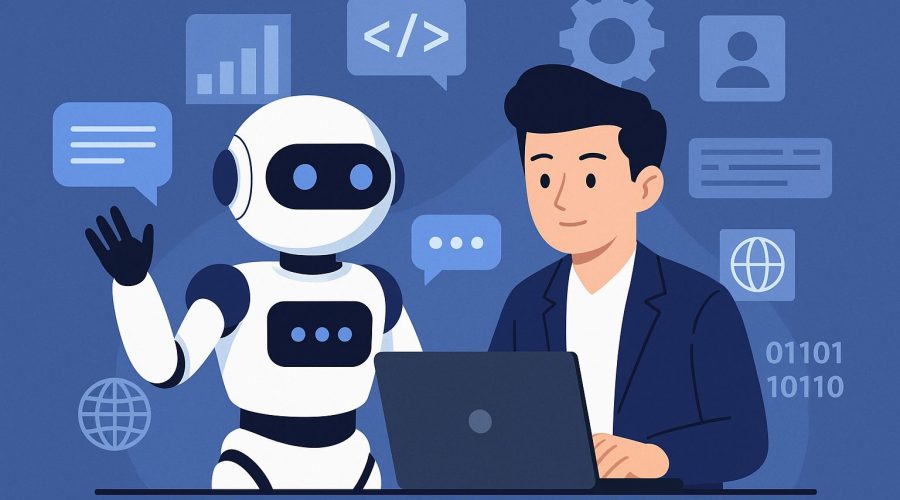Mastering Modern Communication with **Chatbot Technology**
In today’s fast-paced digital world, businesses constantly seek innovative ways to connect with their customers. This is where **chatbot technology** steps in. Chatbots are transforming how companies interact, offering instant support and personalized experiences. They are not just a trend; they are a fundamental shift in customer engagement.
Are you curious about how these intelligent systems work? Do you wonder how they can benefit your business or daily life? This comprehensive guide will explore the fascinating world of chatbots. We will uncover their mechanics, diverse applications, and future potential. Furthermore, you will understand why embracing this technology is crucial for modern communication strategies.
Table of Contents
- What Exactly is Chatbot Technology?
- How Do Chatbots Function? The Underlying Mechanics
- Key Benefits of Integrating Chatbot Technology
- Transformative Applications Across Various Industries
- Future Trends and Evolution of Chatbot Technology
- Challenges and Important Considerations
What Exactly is Chatbot Technology?
At its core, **chatbot technology** refers to software applications designed to simulate human conversation through text or voice interactions. These programs allow users to communicate with digital assistants as if they were talking to a real person. Fundamentally, chatbots streamline communication, making it more efficient and accessible. They operate using predefined rules or through more advanced artificial intelligence.
Historically, chatbots were simple, rule-based systems. They could only respond to specific keywords or phrases. However, with advancements in AI and machine learning, modern chatbots have become incredibly sophisticated. They can understand context, learn from interactions, and even adapt their responses over time. This evolution has significantly broadened their capabilities and potential uses. For example, some advanced **AI chatbots** can handle complex queries, providing detailed and nuanced answers.
The primary goal of **chatbot technology** is to automate repetitive tasks and provide instant assistance. This frees up human agents to focus on more complex issues. Moreover, chatbots can work 24/7, providing uninterrupted service to customers globally. This constant availability drastically improves customer satisfaction and operational efficiency. Therefore, understanding this foundational concept is vital before diving deeper into their functionalities.
How Do Chatbots Function? The Underlying Mechanics
Understanding how **chatbot technology** operates involves grasping several key components. Generally, chatbots process user input, interpret its meaning, and then generate an appropriate response. This entire process happens almost instantaneously, creating a seamless user experience. There are two main types of chatbots, each with distinct underlying mechanisms: rule-based and AI-powered.
Rule-Based vs. AI-Powered Chatbots
Rule-based chatbots follow a predetermined set of rules and scripts. They can only respond to specific commands or keywords. If a user asks something outside their programmed scope, they typically cannot provide a relevant answer. For instance, a simple chatbot might be programmed to respond to ‘menu’ with a list of options. While limited, these bots are effective for simple, repetitive tasks like answering FAQs or guiding users through a fixed process. They are generally easier and quicker to develop.
Conversely, AI-powered chatbots are far more advanced. They utilize artificial intelligence, including machine learning (ML) and natural language processing (NLP). These chatbots can understand the intent behind a user’s query, even if the exact words are not in their database. They learn from previous interactions, continuously improving their understanding and response accuracy. This makes them highly versatile for complex customer service scenarios. Therefore, they are often referred to as `conversational AI` platforms.
The Role of Natural Language Processing (NLP)
Natural Language Processing (NLP) is a critical component of advanced **chatbot technology**. NLP allows chatbots to understand, interpret, and generate human language. It breaks down user input into manageable pieces, identifying keywords, entities, and the overall sentiment of a message. Once the intent is understood, the chatbot uses its knowledge base to formulate a suitable reply. This involves not just matching words but understanding the context and nuance of human communication.
Furthermore, machine learning algorithms enable chatbots to learn from vast amounts of data. This allows them to recognize patterns, make predictions, and refine their responses over time. The more data they process, the smarter and more effective they become. Consequently, these AI advancements allow chatbots to provide increasingly human-like and helpful interactions, pushing the boundaries of what `virtual assistants` can achieve.
Key Benefits of Integrating Chatbot Technology
The adoption of **chatbot technology** is soaring due to its numerous advantages for businesses and users alike. Implementing chatbots can lead to significant improvements in efficiency, customer satisfaction, and operational costs. For instance, many companies report substantial savings by automating customer interactions. This makes them a valuable asset in today’s competitive landscape.
One of the most significant benefits is 24/7 availability. Unlike human agents, chatbots do not require breaks or sleep. They can provide instant support around the clock, regardless of time zones. This ensures that customers receive immediate answers to their queries, significantly enhancing their experience. Moreover, this constant availability helps to reduce waiting times, which is a common point of frustration for customers.
Another crucial advantage is cost reduction and scalability. Chatbots can handle a large volume of inquiries simultaneously without additional staffing costs. This scalability is vital for businesses experiencing rapid growth or seasonal spikes in demand. By automating routine tasks, companies can redirect human employees to more complex or strategic roles, optimizing resource allocation. This shift in workload ultimately leads to increased productivity across the organization.
Moreover, **chatbot technology** excels at improving customer service automation. They provide consistent and accurate information every time, reducing the chances of human error. Chatbots can also personalize interactions based on user history or preferences, leading to a more engaging experience. They can quickly access vast amounts of information, ensuring that answers are always up-to-date and relevant. Finally, chatbots gather valuable data on customer interactions, providing insights that can be used to further improve services and products. This data-driven approach is invaluable for continuous business improvement.
Transformative Applications Across Various Industries
**Chatbot technology** is not confined to a single sector; its versatility allows for widespread application across numerous industries. From enhancing customer service to streamlining internal processes, chatbots are proving to be invaluable tools. Businesses are leveraging their capabilities to create more engaging and efficient interactions.
In customer service, chatbots are revolutionary. They handle initial inquiries, answer frequently asked questions, and guide users through troubleshooting steps. This significantly reduces the workload on human support teams. For example, a telecommunications company might use a chatbot to help customers check their data balance or change their Wi-Fi password. This instant support improves customer satisfaction and reduces call center traffic. Furthermore, they ensure a consistent brand voice.
The e-commerce sector greatly benefits from **chatbot technology**. Chatbots can assist shoppers with product recommendations, track orders, or process returns. They offer a personalized shopping experience, guiding customers through their purchase journey. Imagine a chatbot suggesting outfits based on your style preferences or instantly answering questions about sizing. This boosts sales and improves conversion rates by making shopping more convenient and enjoyable. It’s like having a personal shopper available 24/7.
In healthcare, chatbots provide initial symptom assessment, schedule appointments, or offer medication reminders. They act as `virtual assistants` for patients, providing accessible health information and reducing the administrative burden on medical staff. For instance, a chatbot could help a patient understand their prescription instructions. Similarly, the banking and finance industry uses chatbots for checking account balances, processing transactions, and providing fraud alerts. These applications enhance security and convenience for bank customers. They empower users with instant access to their financial information.
Even in education, **chatbot technology** finds its place. Chatbots can answer student queries about course schedules, assignments, or campus resources. They provide instant support to students, freeing up faculty to focus on teaching. Overall, these diverse applications highlight the immense potential of chatbot technology to redefine interactions and operations across the global economy.
Future Trends and Evolution of Chatbot Technology
The landscape of **chatbot technology** is continuously evolving, promising even more sophisticated and integrated experiences. The future will see chatbots becoming increasingly intelligent, intuitive, and seamlessly woven into our daily lives. Several emerging trends are set to shape the next generation of conversational AI.
One major trend is the integration of voice recognition and synthesis. While many chatbots currently rely on text, future iterations will offer more natural voice conversations. This will make interactions feel even more human-like and accessible, especially for users with disabilities or those who prefer speaking over typing. Think of advanced voice `virtual assistants` that can truly understand spoken nuances. This shift will open new avenues for user engagement.
Another significant advancement lies in emotional intelligence and empathy. Future chatbots will be better equipped to detect and respond to human emotions. This means they could adjust their tone or approach based on a user’s frustration or satisfaction. This capability would revolutionize customer support, making interactions more personalized and comforting. Furthermore, ethical considerations around emotional AI will become increasingly important.
The rise of generative AI models is also profoundly impacting **chatbot technology**. These models can create original, coherent, and contextually relevant responses, moving beyond predefined scripts. This allows for more fluid and natural conversations, handling a broader range of complex queries. The ability to generate novel content means chatbots can offer truly unique interactions. This capability helps them learn and adapt much faster than before.
Moreover, **proactive and predictive capabilities** will become more common. Chatbots might anticipate user needs based on past behavior or external data, offering assistance before being explicitly asked. For example, a chatbot might proactively offer flight status updates if you have a travel booking. This predictive behavior enhances convenience and moves customer service from reactive to proactive. Ultimately, these trends indicate a future where **chatbot technology** is an indispensable part of our digital interactions, constantly learning and adapting to serve us better. This continuous improvement ensures their relevance in a dynamic technological landscape.
Challenges and Important Considerations
While **chatbot technology** offers tremendous advantages, it is essential to acknowledge the challenges and considerations associated with its implementation. Overcoming these hurdles is crucial for successful deployment and positive user experiences. Businesses must be mindful of these aspects to fully leverage the potential of chatbots.
One primary challenge is handling complex or nuanced queries. While AI chatbots are advanced, they still struggle with highly specific, ambiguous, or emotional inquiries that require human empathy and critical thinking. If a chatbot cannot understand a user’s intent, it can lead to frustration and a poor user experience. Therefore, a clear escalation path to a human agent is always necessary. This ensures complex issues are resolved effectively.
Data privacy and security are also paramount concerns. Chatbots often handle sensitive customer information. Ensuring robust data encryption, compliance with regulations like GDPR, and transparent data handling policies is vital. Users must trust that their information is safe when interacting with a chatbot. Any data breach can severely damage a company’s reputation and lead to legal repercussions. Consequently, businesses must prioritize secure development practices.
Furthermore, integration complexities can arise. Implementing **chatbot technology** often requires seamless integration with existing CRM systems, databases, and other business tools. This can be technically challenging and time-consuming, requiring skilled developers. A poorly integrated chatbot might fail to access necessary information, limiting its effectiveness. Therefore, careful planning and execution are essential for successful deployment.
Finally, continuous training and maintenance are necessary. Chatbots, especially AI-powered ones, need ongoing training to improve their understanding and accuracy. User feedback, new data, and evolving language patterns require constant updates to ensure the chatbot remains effective. Neglecting this can lead to a decline in performance over time. Despite these challenges, careful planning and strategic investment can mitigate risks. This ensures that **chatbot technology** truly enhances, rather than hinders, business operations and customer satisfaction. The benefits often far outweigh the complexities when managed correctly.
Ready to revolutionize your customer interactions? Explore how **chatbot technology** can transform your business by visiting our blog for more insights. Discover tailored solutions designed for modern communication!




